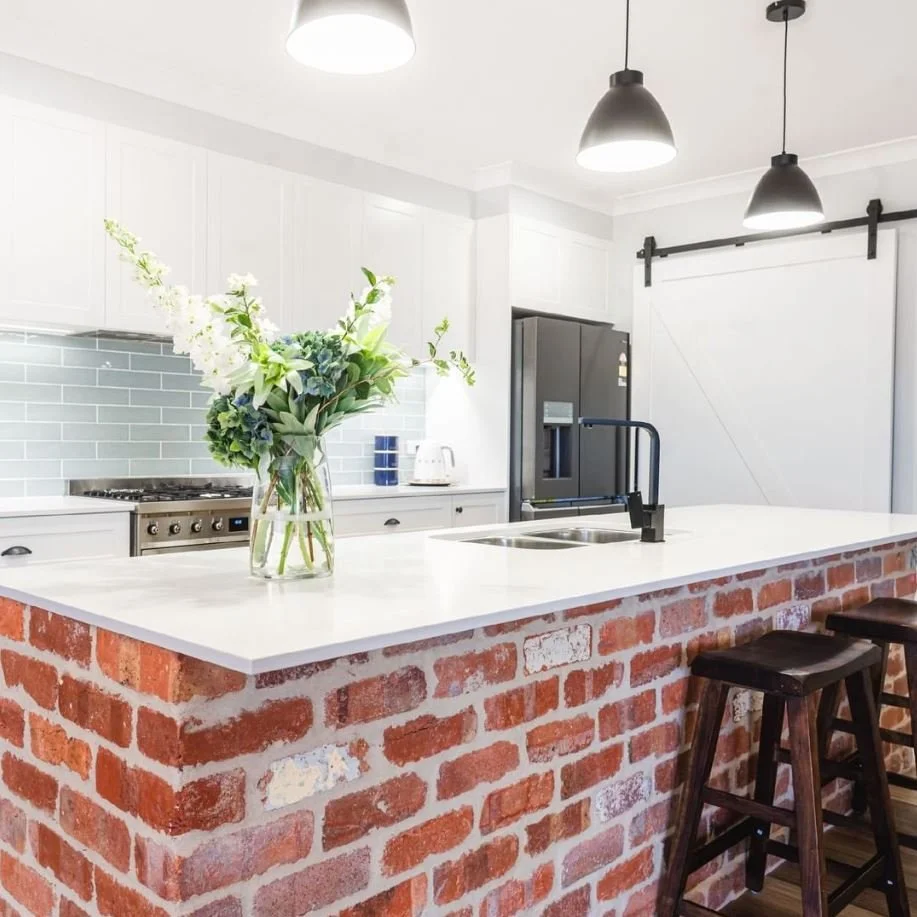How To Run Your Home Appliances More Efficiently
Houzz Australia contributor, Colin Jones, provides expert tips on how to run your home appliances more efficiently and in turn cut costs on your power bills, below.
Being mindful about how you run the major appliances in your home isn’t just good for your back pocket, it’s good for the environment. Here are five tips for keeping your appliance usage in check. The sixth step is to sit back and watch the savings (and your eco cred) add up.
1. Washing Machines & Dryers
Wash At A Lower Temperature: Cleaning your clothes in cold water uses less energy than hot water, plus it’s gentler on their fibres. But cold water does not always remove stubborn dirt and stains. If this is a concern, set the washing-machine temperature to 30°C – this is warm enough to lift stains, but uses less energy than a hot wash.
Consider A Heat-Pump Dryer: Heat-pump machines come with an average six- to eight-star energy rating (some reach as high as a whopping 10 stars), compared with around 1.5 to two stars for a traditional vented dryer, making them the most economical and energy-efficient style of dryer on the market. They are more expensive to buy than a vented or condenser dryer, but recoup the costs down the track in energy savings. How quickly depends on how often you run the machine.
Fill ’Em Up: Washing machines and dryers run more efficiently when they are filled up correctly. Many new washing machines have load sensors that ‘read’ the size of the load and use the perfect amount of water to get it clean. Some new washers and dryers have load indicators that tell you when the machine has reached capacity.
Touch Test: You can check whether you’ve filled an older machine to capacity by putting your hand on top of the washing – it should come a quarter of the way down from the top of the drum (consider this a full load).
Clean Your Dryer’s Lint Filter: Clean your filter after every use so air can pass through it and the machine doesn’t have to work harder than it needs to. When the filter is filled with lint particles, your dryer has to work much harder to push heated air through it to dry your clothes – which costs you money. Some heat-pump dryers have a self-cleaning condenser, which means the machine does the clearing automatically.
2. Heating
Size It Right: Choose the correct-sized heater to warm your space. Too small and the heater won’t warm the room; too large and it will overheat it and waste power.
Choose An Efficient Heater: Gas and convector models are among the most energy-efficient heating options.
Cover Doors & Windows: Use curtains, window coverings and draught stoppers under doors to prevent heat from escaping.
Only Heat The Rooms You’re In: Keep the doors between rooms closed.
Up The Snuggle Factor: Investing in a few extra winter items, such as a doona inner, can keep you warm at night without the need to flick on the heating switch.
Invest In Insulation: Think of insulation like a blanket for your home. By adding it to your roof, you can reduce your heater’s running costs by up to 30 percent. Insulate your walls and floors too, and the savings increase.
3. Fridges
Upgrade To A Model With A Higher Star Rating: New fridges are far more energy-efficient and cheaper to run than their predecessors. So if yours is more than 10 years old, consider an upgrade.
Only Choose As Big As You Actually Need: The larger the fridge, the more energy it consumes. So only buy as big as you actually need.
Keep It Full: Fridges and freezers work by cooling the air inside them, therefore it pays to keep your fridge as full as possible. This means less air inside the fridge needs to be cooled.
Make Sure The Seals Work Properly: If not, cool air will simply escape from your fridge. To check, try the paper test. Place a piece of paper between the door and the fridge, close the door and pull. If the paper slips out easily then it’s time to replace your fridge seals.
Keep It Shut: Every time you open the door you let the cold air escape. Avoid fridge gazing and only open the door when you actually need to.
4. Dishwashers
Upgrade To A Heat-Pump Dishwasher: These dishwashers use steam technology to clean plates, cups and pans, and they have impressive water and energy ratings.
Fill It Up: Make sure the machine is fully loaded before you hit the button. At the same time, avoid over-filling – this can lead to dishes coming out dirty, which only means more cleaning (and more time, water and energy wastage).
Get To Know The Features: Some models come with options such as ‘eco-load’ or ‘half-load’ that make for more efficient cleaning. Also consider using the rinse or pre-wash cycle of your dishwasher, rather than running dishes under the tap, to save water.
Use Quality Dishwasher Detergent: This can help you get better results and reduce the need to re-wash.
5. Ovens & Cooktops
Go Induction: Consider upgrading your gas or ceramic cooktop to an energy-efficient induction model.
Buy Smart: When choosing a new oven, look for a style that has a well-insulated door, as this will keep the heat in.
Here at Hurst Homes we offer complete customised homes that can be as individual as the owner. We guide your through the entire process including your selections to ensure you create your dream home. Just another reason why we are considered Wagga’s best builder. With over 30 years in the industry as a Wagga Builder you can trust Hurst Homes with your dream home. For information on our upcoming custom Wagga house & land packages, contact us today on 0438 692 962 or fill out the contact us page on our website.
For more tips and tricks from the Houzz experts visit Houzz.com.au

